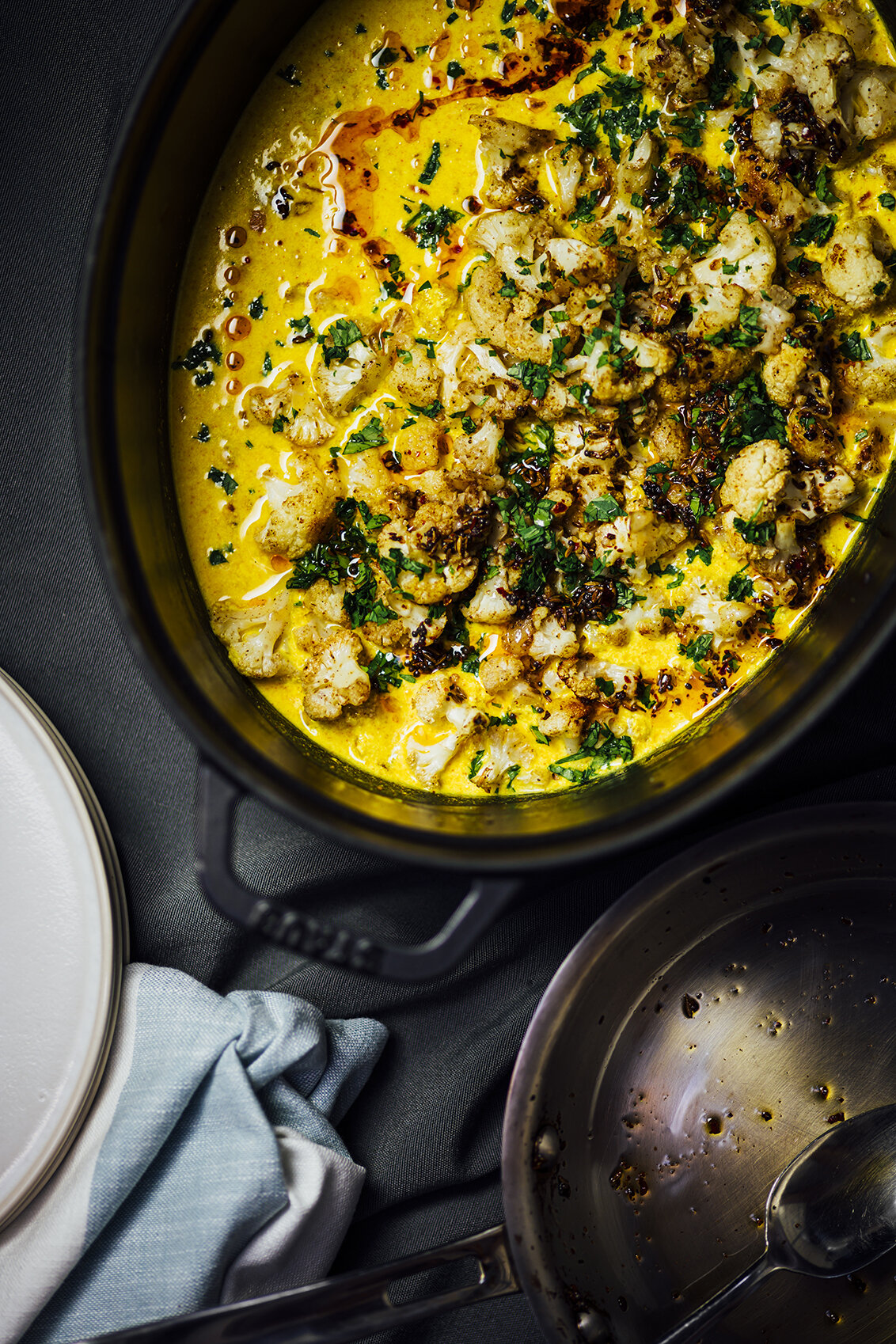We first eat with our eyes. This was an early lesson I picked up when I started A Brown Table, the blog you’re reading today, and why this week’s focus on our journey through The Flavor Equation will be on Sight.
I assume before you try any of my recipes, you first look at the photos of the ingredients and the food. You’re likely to browse the pictures I’ve been sharing from The Flavor Equation to get a sense of the kinds of recipes I include in that book, including the bonus recipes you can access here.
The colors and shapes of visuals are critical in helping whet our appetites and making decisions about food; they help build our perception of what we eat. The rising popularity of images of food and cooking videos on social media platforms is perhaps one of the most powerful testimonials of the impact of visuals on eating.
Yet the adage “Don’t judge a book by its cover” is true, especially regarding brown-colored food. Not everything that tastes delicious looks good. One of the challenges I often face when styling and photographing dishes such as curries, stews, and gravies that are various shades of brown is how to make them appealing and enticing enough for people to want to cook them. That’s where the power of a garnish comes in; a few sprigs of fresh cilantro, parsley, or mint soften the look with their bright verdant tones and give the dish an appealing visual contrast.
View this post on InstagramI know I’m biased but I kinda like it a lot! Thank you @staub_usa
A post shared by Nik Sharma (@abrowntable) on
The visual theme for The Flavor Equation is a bit different. Since the book is about flavor and the science behind it, I wanted the look to have a fresh approach but still retain some of what’s unique to my style. Throughout the book, you will notice a closer look at the ingredients…a much closer look. For some of the shots, I returned to the first camera I learned to use: the microscope. I reached out to the University of Berkeley, where the Biological Imaging Facility was kind enough to let me come in and get high-res microscope images of some of the ingredients you see in this book, from the spices to the crystals of salts and sugars.
As I learned to style food for my photographs, I began to pay close attention to the colors and shapes of ingredients and pair them with props that drew attention to the food to make it attractive. I picked up clues on color pairing by sifting through home design catalogs and noted how photographers composed images for architectural magazines by playing with shapes. There’s scientific support for my preference for certain geometric shapes over others. In a study of people’s responses to shapes, participants preferred curved shapes over sharp angular edges.
I hope some of my photos from The Flavor Equation bonus recipes inspire you to cook. When you take pictures of your dishes and share them with me on Instagram, you’ll get a chance to win some of my favorite kitchen products, including some items from Staub. Find the details here.
My preference is for props with neutral colors, so the color of the food draws your eye immediately. As you may have noticed in my books, I’m a big fan of Staub’s cast-iron cookware, particularly anything in their black finish line. Staub’s cookware is easy to use, withstand high temperatures in the oven, and I’ve been using my cookware for several years. Often they’re my go-to cookware when I’m recipe testing.
A few years ago, I had the chance to visit the Staub factory in France and see them make their cast-iron cookware. Their endurance testing process is extremely rigorous, making their cookware so reliable. If you haven’t already, you can read more about my trip to the Staub Factory and about the “birth of Dutch Oven” here .
The relationship between sight and flavor perception is complex, but by playing with the way in which food is presented to the eater, we have exciting new opportunities to create a stimulating and satisfying food experience.
I will share a recipe from The Flavor Equation that you won’t find in the bonus recipes: Roasted Cauliflower in Turmeric Kefir (Coming Soon). The bright colors of the turmeric and spice infused oil with the garnish of fresh green herbs makes the dish look vibrant and delicious, and you’ll see it’s cooked in a Staub pan that makes the color and texture in the photograph pop. While the photograph might whet your appetite, the actual dish is one of my favorites. I hope you’ll enjoy cooking it and sharing your photographs with me using #TheFlavorEquation.
I hope this post inspired you to share more pictures of the food you’re cooking, whether it’s from The Flavor Equation or other recipes. Click here to learn how to immerse yourself in the Flavor Equation experience, including a chance to win a grill pan and baking dish from Staub and other products from participating partners.
Reprinted from The Flavor Equation by Nik Sharma with permission by Chronicle Books, 2020



